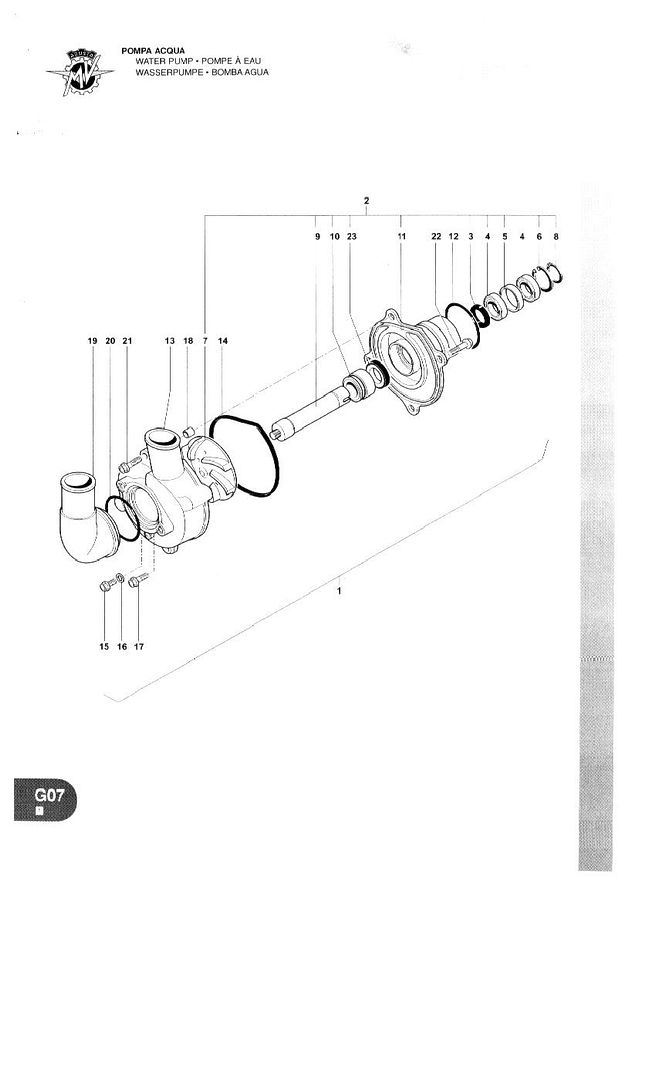Battery Problems, Tips, and Alternatives
As you may have previously read, there have been some instances where the stock F4 battery has leaked causing damage to the rear shock and swingarm. After much discussion the consensus is that this is caused by improper battery preparation by some dealers and or owners. After filling, it is advised that you let it sit upright for 24 hours before capping and then on it's side for another 24 hours to allow sufficient time for out-gassing or it will build internal pressure and leak. It is not a pretty sight! (photos courtesy of John King)




An empty plastic oil container can be used to make a containment tub which is set into the stock battery tray. An absorbent mat can also be added to the inside of this to help with spillage should it occur. (photos courtesy of James Corell)




There are also some alternative replacement batteries that are available if you prefer not to use the stock FIAMM unit. Here is a starter list which will be added to as more info comes in:
Yuasa YT12A-BS which is also used on Suzuki GSXR 750 2000/2003 TL1000R 1998/2003 and GSXR 1300R Hayabusa 1999/2004
Yuasa YTZ10S used by MV as a factory upgrade and also used on Honda CBR954RR 2002/2003 and CBR1000RR 2004
Yuasa YTX9-BS which may be replaced by a Westco 12V9-B or a Bosch 508 012 088/0 097 150 80C (this is a UK sourced number and appears to be a dealer P/N for the unit)
http://www.apexbattery.com/yuasa-ytx9-bs-motorcycle-battery.html
Note: The above units are know as AGM (Absorbed Glass Mat) type batteries which are sealed and therefore should not spill acid on components although there have been a few occasions where this happened, please read below.
There's two problems that have come to light over here (Australia) with the new breed of batteries, you may already know that Ducati, Triumph, and some other brands have been having major warranty claims over these things since their introduction. Triumph is now sending all dealers world wide a rising rate charger for the pre-delivery (first charging of the batteries). This seems to get them to their max charge rate and helps them keep it over a long period as well. It is also known here that you have to leave the batteries after this charge to sit for 6 to 12 hours before fitting into a bike (more important if the battery lies on it's side in a bike like Dukes and MV's) as well or you end up with the gel leaking out. (courtesy of Paul from the Aprilia forum)


Here is some more battery/charger info that I found:
The "intelligent" chargers, used to "maintain" a battery assume thatthey are dealing with a "good" battery. For them, 2.4 VDC or even morethan that, is required to consider charging it and not declaring it BLR. Car chargers, especially the ones designed for dealing with "deepdischarged" batteries or the ones the dealers use to prime new freshly filled batteries could try to revive the battery and restore thechemical process. It seems that Mike's momentary reversing of polarityaccomplishes the same thing.
Basically 1.5 volts represent the full operating range of charge on a12-volt battery. It is possible to over discharge a battery well beyond its intended design. It is possible to take the battery voltage (on a 12-volt battery) down to 3 or 4 volts under load. That would constitute a severe over-discharge. Many batteries will not respond kindly to such abuse. Although if this only happens a few times, the battery voltage may recover to 8 or 9 volts without recharging. There is also a good chance that the battery can be restored to full health provided that it is recharged within a few hours of experiencing thesevere over-discharge.
Typically 11.4 volts represents 0% state of charge. Anything below11.4 VDC and the battery is discharged at a negative state of charge, or in other words, discharged at e.g. 120% or 150% of rated capacity.Without knowledge of very recent severe over-discharge conditions, one could make a judgment about the condition of the battery by a voltage measurement. If the battery voltage on a 12-volt battery is only 8 or 9volts, when measured in a rest state, then there is a very good chance that battery is defective. At the very least it is safe to say that the battery has been severely over-discharged. That's probably what Phil's optimate was reporting. Now if you charge it right away and do it correctly (voltage over time as required by the battery type) you have probably saved the battery, albeit with some scars left in it.
Also, getting back on the leaking battery issue, I thought of another potential culprit. A cheapo, defective or unsuitable (for AGM batteries) trickle charger or a bad voltage regulator. Basically something that tries to charge the battery at anything above 14.5 VDC, even for a short amount of time. This is called gassing voltage and you probably can guess by the name what it does to the battery. The gasses produced are more than the battery is designed to handle. (courtesy of the Yahoo forum)
Quick Easy Tip:
When installing the battery, and to hold the battery terminal nuts firmly in place and to prevent them from coming dislodged when the battery is tilted, cut a foam type ear plug in half (the cylindrical type) then squeeze it and slip it behind the nut. When it expands it holds the nut firmly enough to get it started. (courtesy of John Markis)
TGM
































